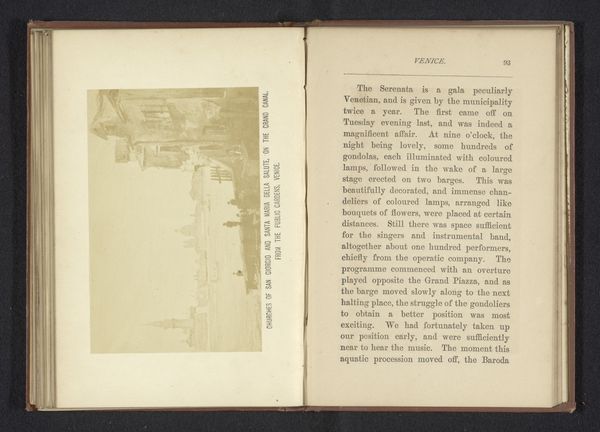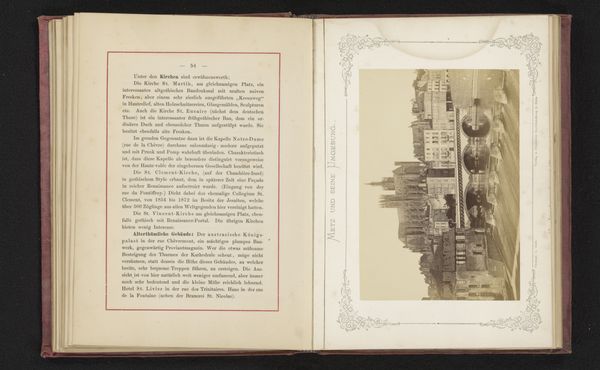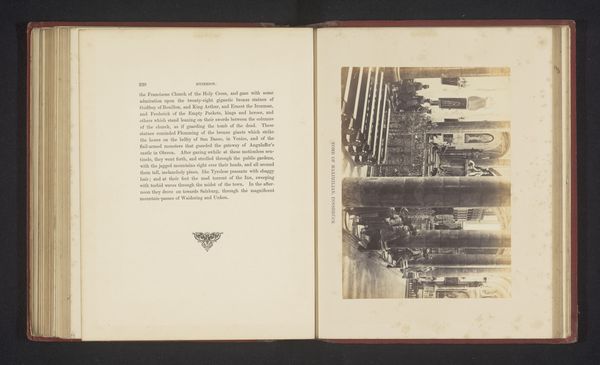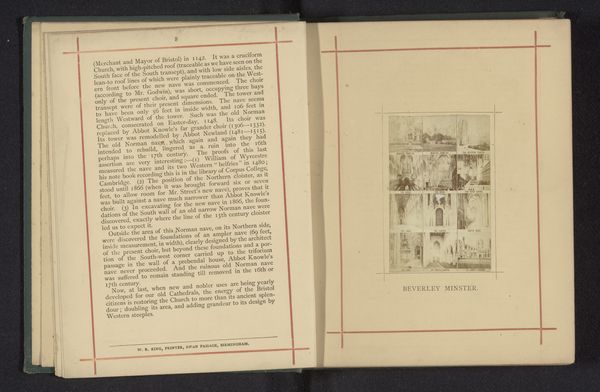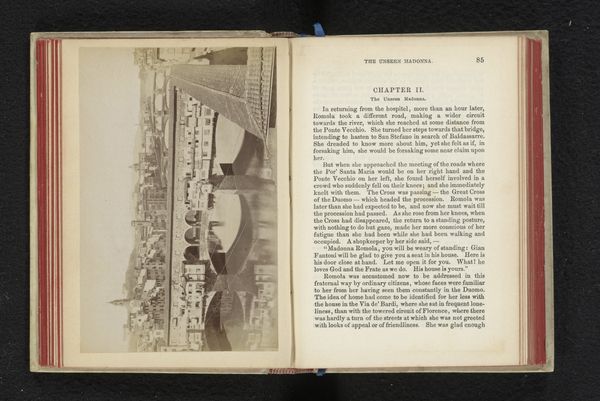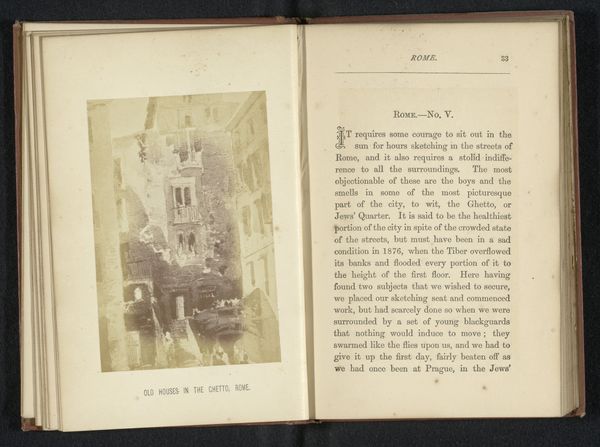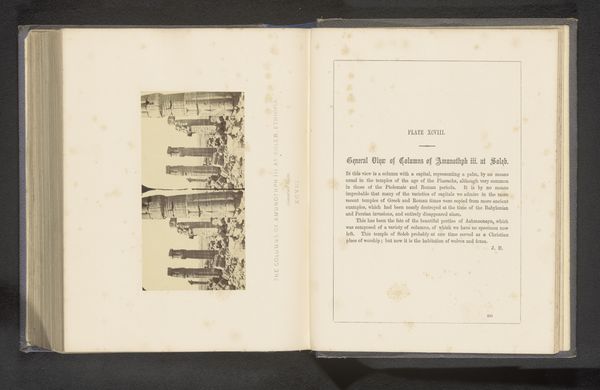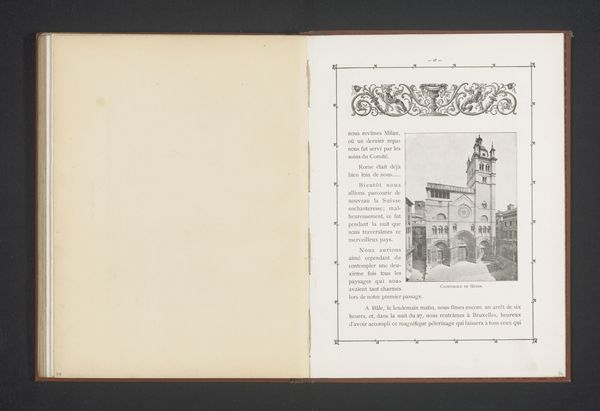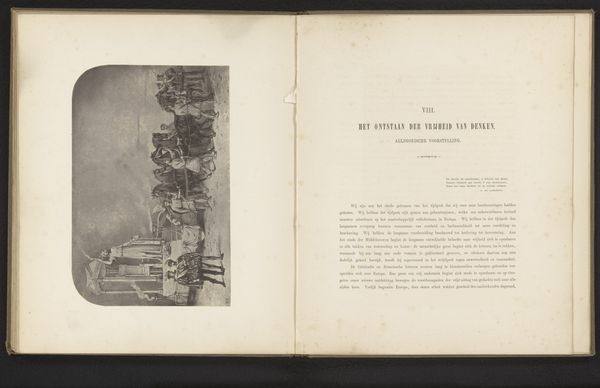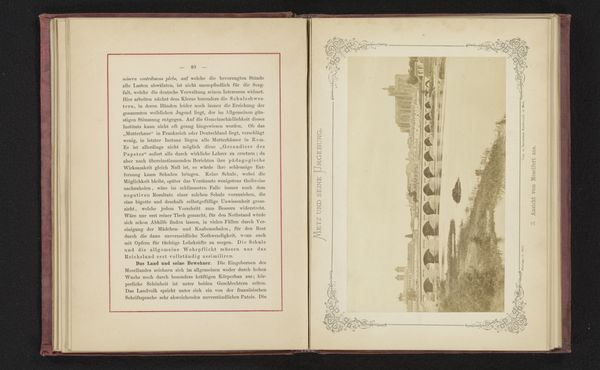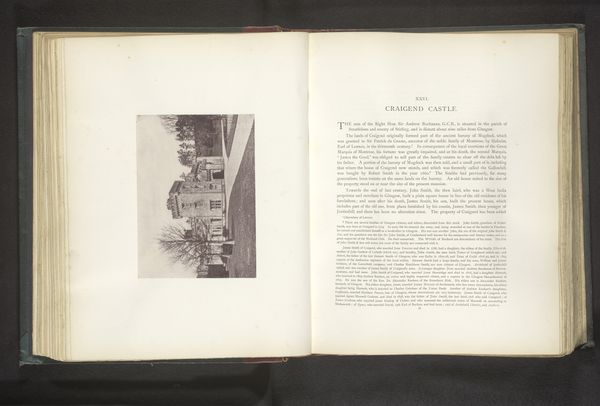
Dimensions: height 127 mm, width 81 mm
Copyright: Rijks Museum: Open Domain
Curator: This albumen print, "Street view, with old column, Florence," made before 1877, really exemplifies how early photography intersected with specific economic conditions. Editor: It does have a certain romantic quality, almost dreamlike. What draws your eye in this image? Curator: The printmaking process itself. Think about the labor involved. This wasn’t a snapshot. From treating the paper with the albumen—egg whites, essentially, mass produced—to the lengthy exposure time required, photography was embedded in a web of production and consumption. This column is rendered to showcase the aesthetics of the past. Consider also the market for such prints; how this "street view" caters to a growing tourist industry seeking picturesque scenes of Italy, packaged and sold as commodities. How do you think that changes our understanding of what this is? Editor: It almost feels like these photos are a marketing tool disguised as art! This "romanticism" then becomes a tool to drive tourism and shape the public perception of Florence? Curator: Precisely! We can consider the artist less as a solitary genius, but as a skilled craftsperson working within and catering to those structures. So instead of 'genius' maybe 'interpreter'? What labor, whose values? Editor: That’s a really different perspective than I usually consider when I look at older photos. It seems like by examining the means of production, we're uncovering some deeper cultural meanings of early photography. Curator: Absolutely, we are able to see it as a reflection of 19th century society. Editor: I’ll definitely keep this in mind when looking at art from now on. I learned how to evaluate cultural meaning.
Comments
No comments
Be the first to comment and join the conversation on the ultimate creative platform.

